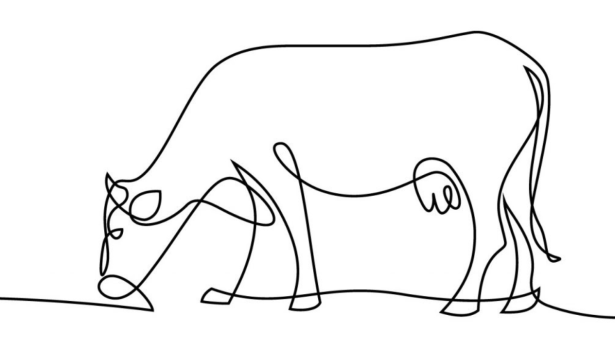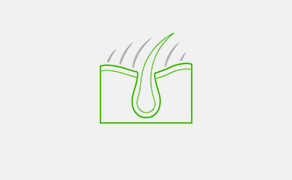Stres u zwierząt – czy na pewno wiemy już o nim wszystko?
Piśmiennictwo
- Horwitz D.F., Mills D.S.: Medycyna behawioralna psów i kotów. Galaktyka, 2009, 147-155.
- Sadowski B.: Biologiczne mechanizmy zachowania się ludzi i zwierząt. PWN, 2012, 355-364.
- Aston-Jones G., Rajkowski J., Cohen J.: Role of locus ceruleus in attention and behavioral flexibility. „Biological Psychiatry”, 1999, 46, 1309-1320.
- Caldji C., Annenbau B., Sharma S., Francis D., Plotsky P.M., Meaney M.J.: Maternal care during infancy regulates the development of neural systems madiating the expression of fearfulness in the rat. Proceedings of the National Academy of Sciences of the United States of America, 1988, 19, 269-301.
- Kovaks K.J., Miklos I.H., Bali B.: Psychological and physiological stressors. „Techniques in the Behavioral and Neural Sciences”, 2005, 15, 775-792.
- Riley V.: Mouse mammary tumors: alteration of incidence as apparent function of stress. „Science”, 1975, 189, 465-467.
- Ivy A.S., Rex C.S., Chen Y., Dubé C., Maras P.M., Grigoriadis D.E., Gall C.M., Lynch G., Baram T.Z.: Hippocampal dysfunction and cognitive impairments provoked bychronic early-life stress involve excessive activation ofCRH receptors. „J Neurosc.”, 2010, 30, 13005-13015.
- Bale T.L., Picetti R., Contarino A., Koob G.F., Vale W.W.,Lee K.F.: Mice deficient for both corticotropin-releasingfactor receptor 1 (CRFR1) and CRFR2 have an impairedstress response and display sexually dichotomous anxiety-like behavior. „J Neurosc.”, 2002, 22, 193-199.
- Sapolsky R.M.: The influence of social hierarchy on primate health. „Science”, 2005, 308, 648-652.
- Fisher J.: Okiem psa. Poradnik psiej psychologii. Państwowe Wydawnictwo Rolnicze i Leśne, 1994, 42-46.
- Fiszdon K.: Znaczenie predyspozycji behawioralnych w wyborze rasy psa do towarzystwa. „Życie Wet.”, 2004, 79, 148-155.
- Morris D.: Dlaczego pies merda ogonem: o czym mówi nam zachowanie psa. „Książka i Wiedza”, 1999, 34-40.
- Rugaas T.: Sygnały uspokajające. Jak psy unikają konfliktów. Galaktyka, Łódź, 2005, 74-80.
- Slabbert J.M., Rasa O.A.E.: National learning of an acquired maternal behaviour pattern by working dog pups: An alternative training method. Science 1997, 53, 309-316.
- Overhaul K.L.: 2011 – Topics in Companion Animal. „Medicine”, 2011 26 (1), 2-9.
- Hiby E.F., Rooney N.J., Bradshaw J.W.S.: Dog training methods: their use, effectiveness and interaction with behaviour and welfare. „Animal Welfare”, 2004, 13 (1), 63-69.
- Rooney N.J., Cowan S.: Training methods and owner–dog interactions: Links with dog behaviour and learning ability. „App. Anim. Behav. Sci.”, 2001, 132, 167-177.
- Phillips Buttner A.: Neurobiological underpinnings of dogs’ human-like social competence: How interactions between stress response systems and oxytocin mediate dogs. „Social Skills”, 2016, 39.
- Jeong Y.K., Oh Y.I., Song K.H, Won Seo K.: Evaluation of salivary vasopressin as an acute stress biomarker in healthy dogs with stress due to noise and environmental challenges. „BMC Veterinary Research”, 2020.
- Galsgaard A., Eskelund K.: An explorative clinical pilot study into the effect of service dogs on chronic posttraumatic stress disorder. „Traumatology. Advance online publication”, 2020.
- Stafleu F.R., Rivas E., Rivas T., Vorstenbosch J., Heeger F.R., Beynen A.C.: The use of analogous reasoning for assessing discomfort in laboratory animals. „Anim Welf.”, 1992, 1, 77-84.
- Chmelíková E., Bolechová P., Chaloupková H., Svobodová I., Jovičića M., Sedmíková M.: Salivary cortisol as a marker of acute stress in dogs: a review. „Domestic Animal Endocrinology”, 2019.
- Fidan A.F.: Stress response related to ultrasonographic examination in dogs. „Turkish Journal of Veterinary and Animal Sciences”, 2020, 44 (1), 96-100.
- McDonald C.I., Zaki S.: A role for classical music in veterinary practice: does exposure to classical music reduce stress in hospitalised dogs? „Aust Vet J.”, 2020.
- Cichoń R., Czyżyk R., Modrzyk J.: Koprofagia − zaburzenia behawioralne czy genetyczny imprinting?. „Weterynaria w Praktyce”, 2020, 3, 34-42.
lek. wet. Remigiusz Cichoń
Przychodnia Weterynaryjna „DOG”
ul. Stefana Żeromskiego 66 26-110 Skarżysko-Kamienna
Mogą zainteresować Cię również
Znajdź swoją kategorię
2843 praktycznych artykułów - 324 ekspertów - 23 kategorii tematycznych
Weterynaria w Terenie

Mykotoksyny – ukryty wróg w hodowli bydła mlecznego
Koszty Walka z mykotoksynami w stadzie bydła mlecznego jest nie tylko kwestią zdrowia zwierząt, ale także istotnym aspektem ekonomicznym. Analizy kosztów i korzyści pokazują, że inwestycja w kontrolę mykotoksyn może być wysoce opłacalna. Straty wynikające z obecności mykotoksyn, takie jak spadek produkcji mleka, zwiększone koszty weterynaryjne i przedwczesne brakowanie krów, mogą znacząco przewyższać koszty prewencji. […]

Kulawizna u bydła mlecznego (choroba Mortellaro). Skuteczne zwalczanie zapalenia skóry palca dzięki naturalnemu rozwiązaniu
Biodevas Laboratoires opracowała PIETIX – rozwiązanie w 100% naturalne, mające na celu zwalczenie zapalenia skóry palca u bydła mlecznego.

Czynniki wpływające na kolonizację mikrobiomu i dojrzałość układu pokarmowego prosiąt oraz jego prawidłowe funkcjonowanie
Piśmiennictwo dr inż. Piotr Nowak Facebook0Tweet0LinkedIn0

Opieka stomatologiczna nad starszymi końmi
Piśmiennictwo lek. wet. Katarzyna FerenzGabinet weterynaryjny Końskie Zdrowie we Wrocławiu Facebook0Tweet0LinkedIn0

Praktyka w terenie – jak zabezpieczyć się na wypadek stanów zagrożenia życia lub zdrowia zwierzęcia
Piśmiennictwo mec. Anna SłowińskaVox Poland Pomoc PrawnaSzczecin Facebook0Tweet0LinkedIn0

Wiek ma ogromne znaczenie podczas stawiania diagnozy
Lek. wet. Justyna Domagała tytuł inżyniera zootechniki uzyskała w 2016 r., a tytuł lekarza weterynarii – w 2019 r. na Uniwersytecie Przyrodniczym we Wrocławiu. Po studiach swoją wiedzę poszerzała podczas stażu w Szpitalu dla Koni Equivet, w którym później uzyskała zatrudnienie. W latach 2021-2024 swoją pracę skupiała na internistycznym leczeniu koni oraz pogłębianiu wiedzy na […]

Echa 32. Kongresu Bujatrycznego w Cancun
Profilaktyka Kongres był również okazją do zaprezentowania kilku przełomowych produktów immunologicznych, które mają szansę wprowadzić na nowe tory prewencję znanych od lat jednostek chorobowych, sprawiających wiele kłopotów z punktu widzenia odchowu cieląt czy rozrodu. Mowa tu konkretnie o trzech nowych szczepionkach mających zastosowanie w profilaktyce Mycoplasma bovis, Cryptosporidium parvum czy wirusowej biegunki bydła (BVD). Nie […]



























































